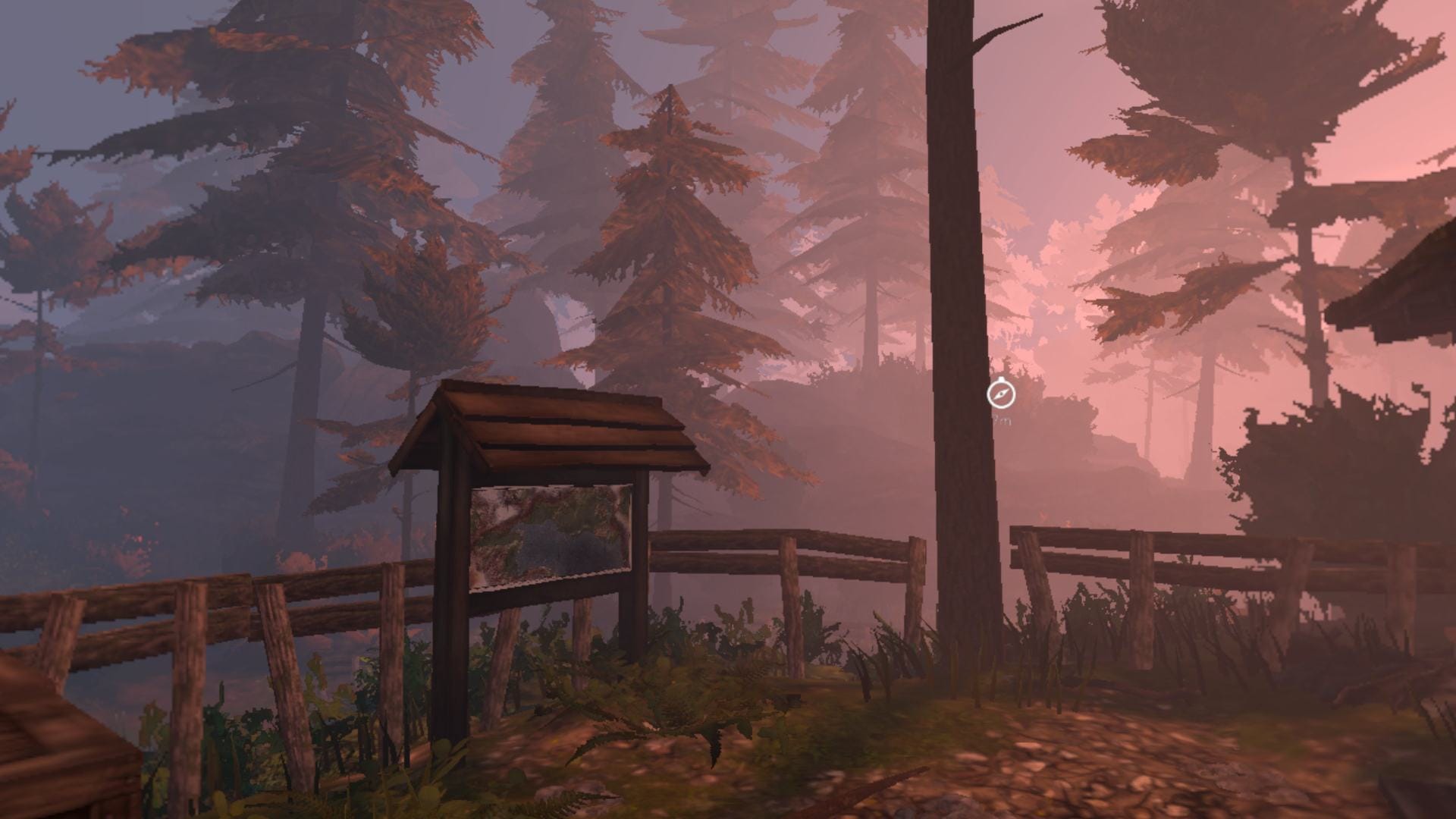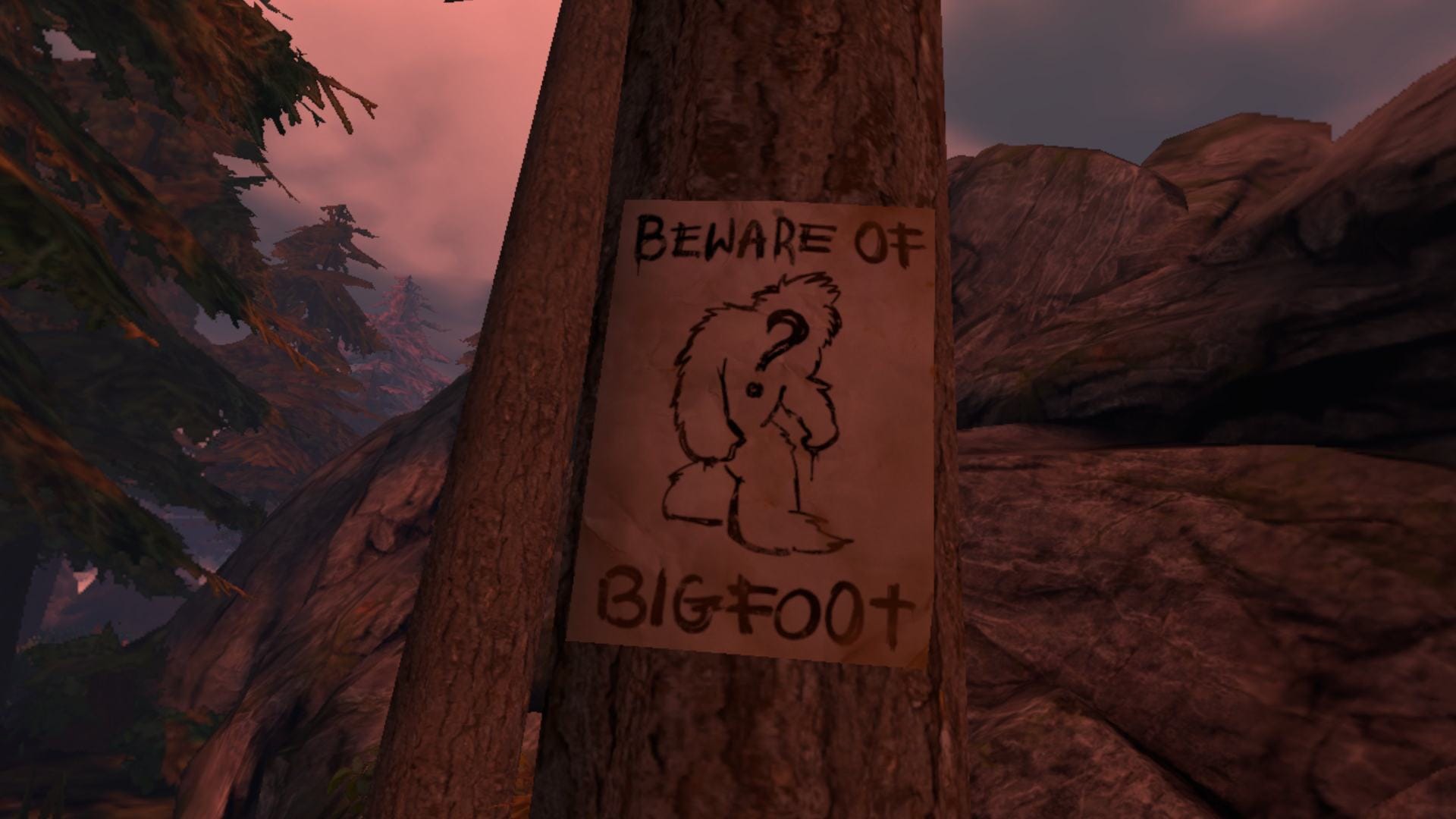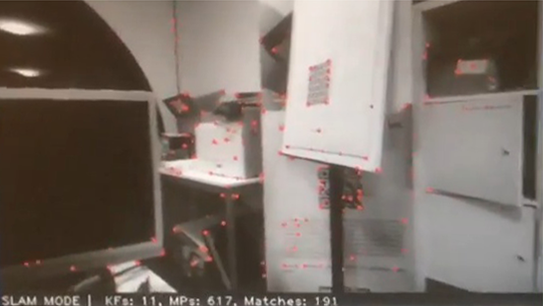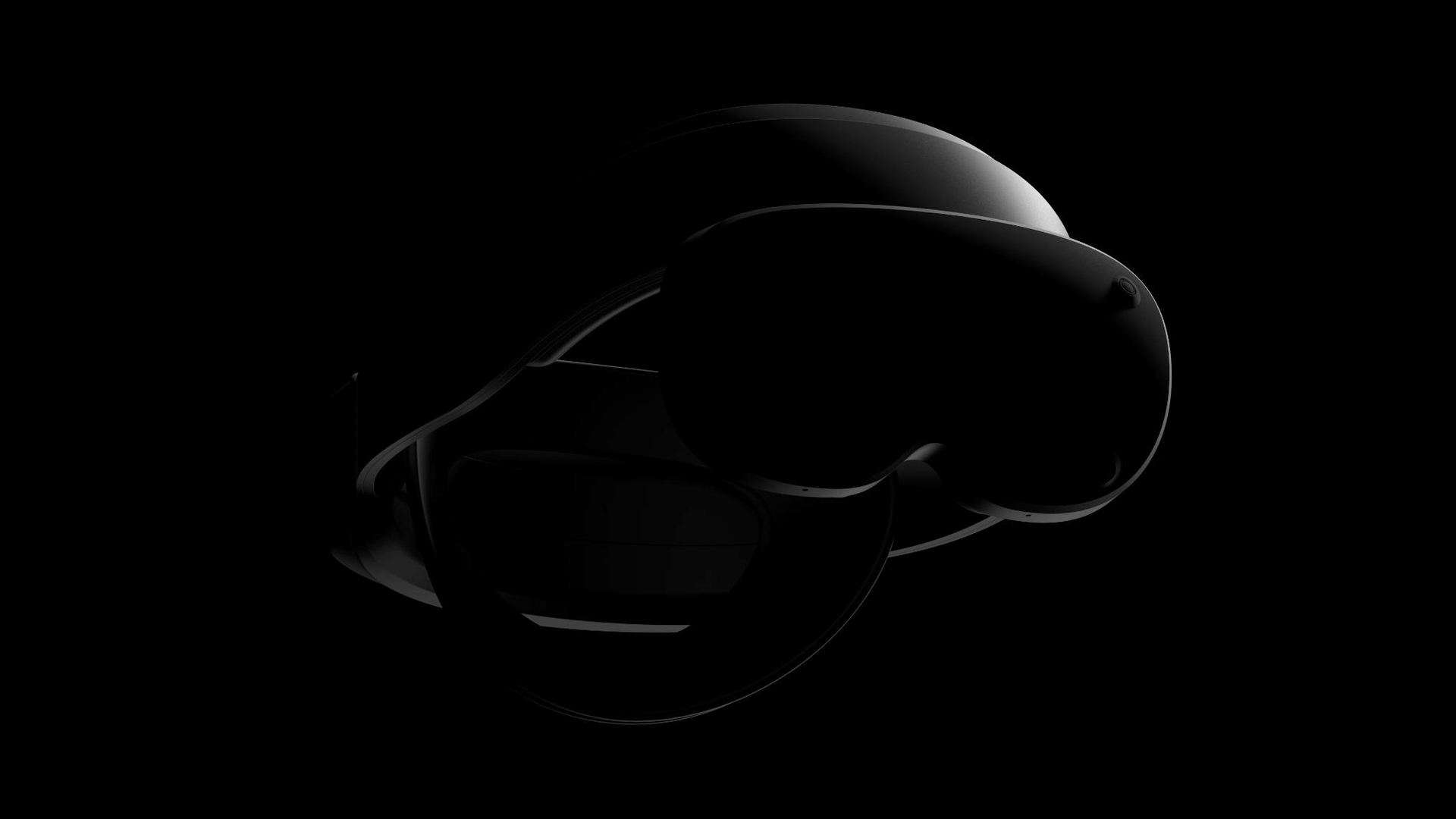HYTE X50 Taro Milk Review


VR multiplayer shooter VAIL gets a free-to-play Extraction mode in early access today on Steam and Quest.
Following last year's free-to-play social hub launch, sci-fi multiplayer shooter VAIL has received an Extraction mode. Now live after 10 months of development, AEXLAB aims to make this a “more approachable” extraction shooter for players unfamiliar with this type of game. You descend into the depths of Reyn to retrieve encrypted data, technology, and resources, fending off other players and the island's inhabitants alike.
Extraction splits you between six teams of three players across a new map, one that contains weather effects like fog, rain, thunder, and more. Alongside the game's usual weaponry, this mode features an “advanced shield and ammo tier system.” Developer AEXLAB states that ammo can penetrate shields in different ways and that's dependent on the relationship between their tiers.
Teammates can be revived if downed, a choice developer AEXLAB says was made to keep players in the action without them waiting around. “Nothing feels worse than being in a squad with your friends, you die, and now you're waiting forever for your teammates to either extract or lose,” stated the studio.
For the full launch, AEXLAB is working on an expanded gameplay loop with in-game missions to help locate and defeat a randomized boss. It's also working on creating customizable homes that other players can visit as your party prepares for raids. Early access will have frequent wipes to assist testing, though there are “no plans” for forced wipes at full release.
AEXLAB also provided UploadVR with its latest roadmap that lists new features to come, such as fishing, unlockable extracts, compound upgrades, and more. Though it doesn't specify release windows, the varying line lengths suggest which of these features are coming first. You can see that in full below.

VAIL Extraction is now live on PC VR and Quest.

 Valve's bombshell Steam Hardware announcement included the very first in-house Valve Steam Machine, and while most reception was initially positive, a number of critics are now showing a lot of skepticism about how well the Steam Machine will actually perform in the competitive market of entry-level PCs and the PlayStation 5. While factors
Valve's bombshell Steam Hardware announcement included the very first in-house Valve Steam Machine, and while most reception was initially positive, a number of critics are now showing a lot of skepticism about how well the Steam Machine will actually perform in the competitive market of entry-level PCs and the PlayStation 5. While factors  Fans were undoubtedly disappointed when Rockstar Games announced a second delay to the highly anticipated Grand Theft Auto VI. However, the wait may sting a little less now that the studio has announced that it’s seminal Western, Red Dead Redemption, is coming to mobile devices for the first time and will be available to Netflix subscribers.
Fans were undoubtedly disappointed when Rockstar Games announced a second delay to the highly anticipated Grand Theft Auto VI. However, the wait may sting a little less now that the studio has announced that it’s seminal Western, Red Dead Redemption, is coming to mobile devices for the first time and will be available to Netflix subscribers.  Following reports earlier this year that Nintendo had made some odd low-level changes to the Nintendo Switch 2's USB-C support for third-party accessories, a recent firmware update seems to be bricking functionality of third-party docking stations entirely. Fortunately, some vendors have already shipped firmware updates for their devices that
Following reports earlier this year that Nintendo had made some odd low-level changes to the Nintendo Switch 2's USB-C support for third-party accessories, a recent firmware update seems to be bricking functionality of third-party docking stations entirely. Fortunately, some vendors have already shipped firmware updates for their devices that Crystal Dynamics has had a rough few months. Following the cancellation of Perfect Dark, which Crystal Dynamics was the primary developer for, the studio was forced to cut a sizable number of developers from the team. Now just a short while later, the company has had to let go of more employees.
Crystal Dynamics is undergoing its fourth round of lay-offs in just two years. This time around, the company has announced plans to let go of 30 employees as part of a ‘restructuring' effort.
The company claims the cuts were made to “optimise the continued development” of Tomb Raider, the studio's flagship franchise. If we take out the marketing spin, then we can gather that the next Tomb Raider game is not close to release, and Crystal Dynamics simply had more employees than it needed at this point in the project's lifespan.
The next Tomb Raider game was greenlit a couple of years ago, shortly after Embracer Group acquired Crystal Dynamics and the Tomb Raider IP from Square Enix. While Embracer continues to own Crystal Dynamics and by extension, Tomb Raider, it is actually Amazon Games that will be publishing the next game in the series. This is notable, as Amazon Games also underwent a massive round of lay-offs last month, leading to the cancellation of multiple projects, and the shelving of New World, the company's only successfully released game.
KitGuru Says: If you've been looking forward to the return of Tomb Raider, it sounds like you'll be waiting a few more years at least.
The post Crystal Dynamics undergoes more layoffs, but Tomb Raider development continues first appeared on KitGuru.
Tracked: Shoot to Survive is a narrative survival adventure made for VR from the Green Hell VR studio, offering an exciting tale that needs further work. Read on for our full review.
Following Incuvo's work on Green Hell VR, Tracked: Shoot To Survive - or Tracked for brevity - feels like a natural step forward to create a narrative survival game that shares similar DNA with the jungle adventure. This new release expands its commitment to a linear story with more biomes and activities, at the cost of resembling PS2 graphics. While some may appreciate a more single-player focused experience, these dated visuals don't provide a fair tradeoff for what's here.
Starting out in a light aircraft on the way to St. Hubert’s Caldera, a fictional island in British Columbia, protagonist Alex Hart is on his way to spread his father’s ashes with his sister Samantha. Their relationship is strained, as we quickly learn in their brief interactions, with her tattooed sleeves alluding to a troubled past. Unexpectedly shot down by gunfire just before arriving, Alex regains consciousness injured amidst the wreckage.
Doing the motion of bandaging your hands to heal shows a made-for-VR aspect that can be recognized instantly. Next to a hastily written note about drug smugglers who shot down the wrong airplane, Green Hell VR’s same backpack inventory system is now yours to keep any useful items in your path. As the saying goes, why fix what isn't broken?

Narrative emphasis is evident from the start. Overhearing these drug traffickers say that Alex’s sister was kidnapped by them gives us a clear goal to work towards. Numerous written documents detailing the island and its inhabitants make for an interesting read between killing aggressive wildlife and enemies alike. The wooden voice acting ranges from explanatory when obtaining new items to emotional, though the dramatic tension gets a little over the top. Flashbacks abound as it is a narrative device to show Alex and Samantha's childhood summers with their father. Subject matters like substance abuse, family drama, and friendship betrayal verge on clichéd in their execution, though the writing itself is gritty enough.
Your father’s old cabin serves as a base of operations; pushing through to save Alex’s sister is not a straightforward task. Every so often, Tracked forces you to create items at your crafting table to proceed, such as the climbing axe to ride a zipline or warm clothes to withstand colder atmospheres. To manually craft every item makes the immersion a highlight, too. Pulverizing coal and sulfur for gunpowder, stitching together a larger backpack to carry more weight from animal pelts, and cooking animal meat with blueberries for a nutritious broth are but a few necessary actions to face Mother Nature fully equipped.

Surviving in the wilds is not a walk in the park. A wristwatch reminds us of Alex's hunger and thirst levels, causing his early demise if these needs are ignored. Ensuring a safe water source from creeks to industrial plastic barrels, which are thankfully abundant, is a must. Granola bars are suspiciously copious as well, to satiate Alex’s famine. Difficulty options can turn these survival mechanics either completely off or more punishing, depending on your mileage and narrative interest. Welcome options for those after a less punishing, more story-focused experience.
Fighting tooth and nail against the military-trained drug smugglers, Tracked has plenty of combat in its 10 or so hour main quest. Hiding in tall grass, at least in the beginning, you must sneak your way before finding a knife to counterattack. All combat encounters are usually against two unsuspecting enemies. The AI isn't that smart; strafing to get closer with the knife, or eventually the litany of firearms available, will make short work of them. The fact that enemies can also perceive you through doors is quite discouraging.

A bow, shotgun, rifle, and revolver each offer multiple ways to tackle each clash. Reloading has a distinct movement for every one of them. Opening the chamber of the revolver and loading the bullets manually may sound cumbersome for some, but after getting used to it, you can relive your western dreams with it. Finding upgrades during the story to store more ammo and reload faster helps. However, the bow isn't particularly accurate and the shotgun never really allowed me to load it. Opening the chamber to try to load the shells was hopeless because reaching for the ammo resulted in it closing off again. That said, the rifle equipped with a scope delivers accurate shots to eliminate beavers and deadbeats alike.
There is a fair balance between fighting the wilderness and humans. Each of the open areas that you explore, ranging from warehouses and cabins to caves and forests, is so different; every hostile environment provides unique enemy encounters. It's quite imposing to struggle against a wild bear over a swift wolf, with the latter appearing more often at night. Scavenging for animal supplies is disgustingly gruesome as you separate the poor carcass in two, causing a splatter in the process. The buzzing sounds of flies next to a haunting howl sell the idea of being stranded in an unforgiving wildland well.
Before using any new weapon it must be repaired.
The day and night cycle is important to consider, as it's nigh impossible to explore once it gets dark without crafting the headlamp to aid your vision. Tracked’s level design is well considered enough to let you backtrack to previous areas, with smartly placed ladders and doors that unlock as you progress. This isn't as mind-blowingly interconnected as a Metroidvania, but with some side quests asking to forage for specific items, these shortcuts are convenient.
Extensive accessibility features show Tracked: Shoot to Survive was built from the ground up for VR. Calibration for the notebook that you hold in your chest is adjustable, depending on if you are standing or sitting. So are the weapons and tools next to your hip.
Expected camera options for smooth or snap turning movement and speed are there, including the vignette for those prone to suffering from motion sickness. Climbing and ziplining sequences can be simply skipped if desired, too. Your watch with the survival bars can be moved to the left or right hand, as can the knife and backpack slots to accommodate your dominant hand.
A notebook hovering in Alex’s chest at all times helps to give a welcome sense of direction. From the many tabs on display, a map of every level explored makes getting lost virtually a nonissue. Diary-style entries explain the fledging protagonist’s train of thought well as he slowly becomes a seasoned survivor to save his sister. Tracking unlocked achievements is quick, with the game celebrating goals like crafting 100 bullets or drawing first blood, though you don't earn any rewards for this. All documents obtained are easily accessible, with the standout “Finding Bigfoot” side quest panning out in a silly way.

Addressing the elephant in the room, the graphics leave a lot to be desired by Quest 3 standards. Reminiscent of PlayStation 2 visuals, the low-poly character models, exaggerated enemy grunts, and janky AI don't do Tracked any favors. Its linear levels, while clever at times, don't allow for much intuitive exploration. Tracked’s narrative focus delivers, but it's hampered by dated looks.
Finally, the third act, which currently suffers from frequent stutters and crashes, leaves a bad taste in an otherwise serviceable adventure. Incuvo confirmed that it's aware of these issues and is actively working to patch them.
You can see Tracked's promise of cutting your teeth in an unthinkable situation to prevail against all odds. However, its presentation ends up feeling like a product of yesteryear, which isn't helped by poor AI and performance issues.
For the insatiable VR player constantly searching for the next story-driven campaign, it's easier to recommend, albeit with the warning to hold off until the framerate issues are resolved. Tracked won me over with its heartfelt narrative, unserious Rambo-esque combat antics, and VR-centric crafting mechanics that kept me engaged throughout. I just wish there weren't so many strings attached.

UploadVR uses a 5-Star rating system for our game reviews – you can read a breakdown of each star rating in our review guidelines.

 DDR5 memory runs objectively high transfer rates; JEDEC specs go as high as 6.4 Gbps, and overclockers have taken DDR5 beyond the fastest LPDDR5X: all the way to over 13 Gbps. At these speeds, signal integrity becomes a first-order concern, and most systems can maintain peak performance only when running one module per channel. That generally
DDR5 memory runs objectively high transfer rates; JEDEC specs go as high as 6.4 Gbps, and overclockers have taken DDR5 beyond the fastest LPDDR5X: all the way to over 13 Gbps. At these speeds, signal integrity becomes a first-order concern, and most systems can maintain peak performance only when running one module per channel. That generally Quest 3S is on sale for $250 at Best Buy, and comes with a $50 gift card, 1 month of Xbox Game Pass Ultimate, and The Walking Dead: Saints & Sinners VR game.
That's a $50 discount from the headset's regular $300 price, and the three perks together are worth $110. You can find the deal for the 128GB base model of Quest 3 here.
A similar offer is available for the 256GB storage model, with a $330 price ($70 off) and the same $110 of perks. In both cases, you still get 3 months of the Meta Horizon+ subscription, as with all purchases of new Meta Quest headsets.
You could use the $50 Best Buy gift card to get the Elite Strap to make the headset more comfortable for just $10, for example, while during the 1 month of Xbox Game Pass Ultimate (normally $30) you can play flatscreen games like Call of Duty and Fortnite on a giant virtual screen.
As for The Walking Dead: Saints & Sinners, it's also normally $30, and it's widely considered to be one of the best VR games of all time, earning an 'Essential' score in our review.
 UploadVRJamie Feltham
UploadVRJamie Feltham
While Quest 3S can run all the same content as Quest 3, and has the same fundamental capabilities (including the same XR2 Gen 2 chipset and 8GB RAM), if you have the funds we always recommend Quest 3 over Quest 3S. The proper Quest 3 features Meta's advanced pancake lenses which are clearer and sharper over a wider area, have a wider field of view, and are fully horizontally adjustable, suitable for essentially everyone's eyes. These pancake lenses also enable Quest 3 to be thinner, which makes the headset feel slightly less heavy.
Still, at $250 and with $110 worth of perks Quest 3S could be hard to say no to, and it could be an impulse gift for the holiday season to bring a friend or loved one into VR and mixed reality.

VR puzzle adventure Tin Hearts is getting into the Christmas spirit, bringing its first act to Quest next month.
Developed by Rogue Sun and IPHIGAMES, Tin Hearts is a Lemmings-style game that explores the story of a fictional Victorian inventor, Albert Butterworth. Guiding toy soldiers through this Dickensian world with block-based puzzles, VR support arrived in a post-launch on PS VR2 and Steam last year. Now, it's coming to Quest in an episodic release that begins on December 11.
Detailed in a press release, publisher Wired Productions calls Act 1 a standalone episode where these tiny soldiers are appropriately dressed for the festive season in an attic filled with toys. Costing $5.99 for the first part, Acts 2, 3, and 4 will follow “in the coming weeks” on Quest, though no specific release dates were confirmed.
Originally released through a now delisted PC VR prologue on PC VR in 2018, we had positive impressions in our Tin Hearts VR preview two years ago. Stating it offers “some well-considered mechanics” that caught our attention, we believed it provides “enjoyable puzzles and an intriguing whimsical setting.”
Tin Hearts is out now in full on flatscreen platforms, PS VR2, and PC VR. Act 1 arrives on the Meta Quest platform on December 11.

How to God, the deity-themed sandbox experience, launches in Early Access next month on Quest.
Developed by Thoughtfish (Living Room), How to God lets you train as a deity, completing quests and expanding your powers, as you manage a mini society. You can choose to be benevolent and reward your citizens with bountiful harvests or take the spiteful approach and rocket them with fireballs from the heavens. You can check out gameplay below:
On top of building temples and answering (or ignoring) prayers, you'll also perform acts of alchemy, combining materials to create miracles and matter that advance your society. To assist you in achieving these divine goals, you'll have the help of a petlike creature who can help out the locals with tasks or eat them as punishment.
Various biomes are available to explore, including ancient Egypt and the Scottish Highlands, with each location providing a unique set of problems to solve and quests to complete. As you progress through quests, you'll also earn relics that will upgrade your powers at the Tree of Life.
How to God arrives in Early Access on December 4 for $29.99 on Quest.

 Now that we're midway through November, the Black Friday discounts are coming in faster and more furious. And sure, the actual Black Friday date is still two weeks away, but retailers are not sitting around waiting. You shouldn't either, depending what you're in the market for this holiday season. Over at Best Buy, for example, there are some
Now that we're midway through November, the Black Friday discounts are coming in faster and more furious. And sure, the actual Black Friday date is still two weeks away, but retailers are not sitting around waiting. You shouldn't either, depending what you're in the market for this holiday season. Over at Best Buy, for example, there are some  Food delivery giant DoorDash has once again come under negative limelight, this time with a massive data breach stemming from a sophisticated social engineering attack that targeted one of its employees in October. The incident allowed an unauthorized third party to gain access to and exfiltrate key contact information belonging to a mix of
Food delivery giant DoorDash has once again come under negative limelight, this time with a massive data breach stemming from a sophisticated social engineering attack that targeted one of its employees in October. The incident allowed an unauthorized third party to gain access to and exfiltrate key contact information belonging to a mix of Lynx says its next headset won't run Android XR, as Google "terminated" its agreement, but will have by far the widest FOV of any standalone.
If you're unfamiliar, Lynx is a French startup that in 2020 announced Lynx-R1, a standalone mixed reality headset with an open periphery design, and ran a Kickstarter for it in 2021. Had it shipped on time, in 2022, Lynx-R1 would have been the first consumer standalone headset with color passthrough. But after repeated delays it was beaten to market by Meta Quest Pro, and by the time backers started to receive their headsets, years later, Quest 3 and Apple Vision Pro had shipped too, with much more powerful chipsets.
Further, at the time of the Kickstarter Lynx-R1 was envisioned as a roughly $500 consumer product, directly competing with Meta Quest headsets, and Lynx says backers did receive headsets for this price and claims that most who did not have received a refund offer. But the price for new orders rose to $850 and then $1300 as the company pivoted to primarily targeting businesses.
 UploadVRDavid Heaney
UploadVRDavid Heaney
When Google revealed its Android XR operating system back in December, it announced that Lynx, Sony, and Xreal were building devices for it too, to follow Samsung.
Last month, Lynx teased its next headset with a darkened image, and because of Google's December announcement, we speculated that it could be the second opaque Android XR headset.
However, Lynx tells UploadVR that Google "terminated Lynx's agreement to use Android XR" in what the startup describes as a "surprising turn of events".
"We remain open to having Android XR running on the device when Google releases the OS for other headsets, as we worked closely with them for a year to make sure the compatibility would be guaranteed", Lynx says in a prepared statement.
Instead, the next Lynx headset will continue to run Lynx OS, the startup's open-source fork of Android with OpenXR support. And Lynx says it will release the source code for both hobbyists and businesses to use as an alternative to closed-source XR operating systems.
UploadVR reached out to Google to ask about the Lynx partnership and the status of Android XR for headsets other than Samsung Galaxy XR. While the company wouldn't comment on the status of any agreement with Lynx, it confirmed that it's still working with Xreal and Sony.
 UploadVRDavid Heaney
UploadVRDavid Heaney
Lynx will announce details and specifications of its new headset over the coming months, with a full reveal at SPIE in late January.
For now, it's only saying that it will be a "mid-range" headset, priced somewhere between Quest 3 and Galaxy XR, with the widest field of view of any known standalone due to the use of advanced aspheric pancake lenses built in collaboration with Israeli startup Hypervision.
The optical approach here should be somewhat similar to Meta's Boba 3 prototype, though given the practicalities of the standalone form factor, Lynx cautions that while its headset will be noticeably wider than anything else on the market today, it still won't be anywhere near as wide as Boba 3.
When it comes to delivering this time, Lynx founder Stan Larroque tells UploadVR that his company has "learned so much with the R1" in regards to electronics supply chains, and will not do a Kickstarter or preorders for the new headset. When it's available to buy, it will be ready to ship immediately, Larroque claims.

 Intel remains the dominant player in the x86 space when it comes to market share, both overall and in individual segments such as desktop, server, and mobile. However, AMD continues to chip away at its rival's big lead, as we had been seeing. According to the latest data by Mercury Research, AMD now accounts for almost a third of all x86 CPUs,
Intel remains the dominant player in the x86 space when it comes to market share, both overall and in individual segments such as desktop, server, and mobile. However, AMD continues to chip away at its rival's big lead, as we had been seeing. According to the latest data by Mercury Research, AMD now accounts for almost a third of all x86 CPUs,  The Moon is not, in fact, a giant cosmic wheel of Gouda. In a landmark paper published in Nature, researchers from the French National Center of Scientific Research delivered a hard truth: the Moon is actually packing a solid inner core of material with a density suspiciously similar to iron. Rather than a massive cheese ball, we're dealing
The Moon is not, in fact, a giant cosmic wheel of Gouda. In a landmark paper published in Nature, researchers from the French National Center of Scientific Research delivered a hard truth: the Moon is actually packing a solid inner core of material with a density suspiciously similar to iron. Rather than a massive cheese ball, we're dealing Lian Li has expanded its power supply portfolio with the launch of the SX series. Available in 850W, 1000W, and 1200W capacities, these new units are designed to meet the Intel ATX 3.1 specification and carry 80 Plus and PPLP Platinum certifications, promising up to 92% efficiency under typical loads.
Ready for the latest graphics cards, each SX series unit includes a native PCIe Gen 5.1 12V-2×6 connector capable of delivering up to 600W without the need for bulky adapters. For the higher wattage 1000W and 1200W models, Lian Li also includes a 12V-2×6 to dual 6+2 PCIe cable to ensure compatibility with a wider range of peripherals and older cards. The units ship with flexible, braided-texture modular cables designed to facilitate easy routing in tight chassis.






Internals are cooled by a 120 mm fluid dynamic bearing fan. This cooling solution features a Zero RPM mode, which stops the fan completely under light loads for silent operation. A physical switch on the rear of the PSU allows users to toggle this hybrid mode on or off depending on their noise preference. Under the hood, the SX series is constructed using 100% Japanese 105°C capacitors and uses a single +12V rail layout.
Aesthetically, the casing features an embossed mesh pattern to assist with ventilation. As expected for a high-end unit, it comes with a comprehensive suite of industrial-grade protections, including OPP, OVP, SCP, OCP, OTP, UVP, SIP, and NLP, to safeguard the hardware. The Lian Li SX series is now available for pre-order in black and white, and it comes with a 10-year warranty. The SX850P costs £109.99/$119.99/€124.90, the SX1000P costs £130.99/$149.99/€149.90, and the SX1200P costs £139.99/$159.99/€159.90 for the flagship.
KitGuru says: If you were in the market for a new PSU, would any of the new Lian Li SX PSUs have been on your radar?
The post Lian Li launches new SX PSUs with ATX 3.1 and Platinum efficiency first appeared on KitGuru.This week, NCSoft and Sony officially revealed their Horizon MMO project – Horizon Steel Frontiers. One thing about the announcement immediately stood out as strange, the game is only coming to PC and mobile, with no PS5 version planned. As it turns out, that may have been Sony's decision.
NCSoft has addressed the lack of PS5 version for Horizon Steel Frontiers, its new MMO based on PlayStation's popular Horizon series of action-adventure games. Speaking with 4Gamer, NCSoft said that it would “like to” release a PS5 version of the game, but added that it is “not something we can decide on our own”.
The big question raised from this statement is why? Why would Sony put money into creating an MMO based on its Horizon franchise and not bring it to PlayStation consoles?
We may already have the answer to that, as it was also revealed yesterday that Guerrilla Games' next big project won't be a continuation of the single-player games, but rather a multiplayer spin-off instead. Given that Horizon Steel Frontiers is not coming to PS5, it would seem that Sony was concerned about the MMO stealing the thunder from Guerrilla's own multiplayer game, which will launch on PS5.
KitGuru Says: Horizon began life as a PlayStation exclusive franchise and the majority of fans are PlayStation gamers, so not bringing Steel Frontiers to the console is certainly a strange choice. I don't see any reason why both Steel Frontiers and Guerrilla's own Horizon multiplayer game couldn't co-exist on the platform.
The post Sony apparently doesn’t want Horizon Steel Frontiers on PlayStation first appeared on KitGuru.Thermaltake has added the View 390 TG Mid-Tower to its case lineup. Available in both Black and Snow editions, this new ATX case prioritises visibility through a distinctive glass panel design. The chassis also features a curved tempered glass panel on the left side that meets a full tempered glass top panel, creating a seamless view of the interior.
Beyond the vertical fishbowl aesthetic, the View 390 TG is built to support the industry's shift towards hidden-connector components. The motherboard tray includes specific cutouts to accommodate back-plug motherboards, including those from the Asus BTF, MSI Project Zero, and Gigabyte Project Stealth ecosystems. This design allows for significantly cleaner cable management by routing power and data cables entirely behind the motherboard tray.






Cooling is handled by two pre-installed CT120 PWM fans located at the rear of the case. For liquid cooling setups, the chassis supports a radiator up to 360 mm mounted on the right side of the motherboard tray. In total, the case can accommodate up to eight 120 mm fans. For graphics cards, the View 390 TG features rotatable PCI-E slots, allowing users to choose between horizontal and vertical mounting. Moreover, Thermaltake includes a GPU holder and a riser cable bracket to help prevent sag and maintain alignment.
As is becoming standard with Thermaltake's enthusiast cases, the View 390 TG is compatible with the company's optional LCD Screen Kits. Users can purchase a separate 3.9-inch or 6-inch display unit to install in the case, which interfaces with the TT RGB PLUS software to display real-time system diagnostics or custom GIF and JPG images. The build is rounded out with top-mounted I/O featuring a USB 3.2 Gen 2 Type-C port, two USB 3.0 ports, and HD audio jacks. Storage options allow for the installation of up to three 2.5-inch SSDs or two 3.5-inch HDDs. The case is priced at $159.99.
KitGuru says: Would you like to build a system inside one of these?
The post Thermaltake launches View 390 TG with curved glass and hidden-connector support first appeared on KitGuru.Earlier this week, Nintendo rolled out a major Switch 2 firmware update, adding new quality of life features. Unfortunately, this same update also appears to have cancelled out support for third-party docks.
As spotted by Kotaku, the latest Switch 2 firmware update has stopped the video signal from being transmitted when the system is connected to a third-party dock.
While many use the standard dock included with the system by Nintendo, some users have opted to buy cheaper third-party docks to create easy Switch set-ups in other rooms, or to have one for travelling. The official Switch 2 dock costs a whopping £92.99, an insane price given that the official dock is essentially a hollow and cheap feeling lump of plastic, with a couple of ports integrated.
Nintendo has not yet commented on the issue, so it is unclear if this was an intended move to force users into only using the official dock, or if it was simply a mistake that will be patched later.
KitGuru Says: Considering the price of an official dock, it is no surprise that some users have turned to cheaper third-party solutions. Hopefully this on-going issue was just a mistake on Nintendo's part and a patch will come soon to restore support.
The post Switch 2 firmware update breaks support for third-party docks first appeared on KitGuru.AMD has continued to develop its FidelityFX Super Resolution technology, moving from a spatial upscaler when it first released to a machine learning-based solution with the launch of FSR 4. The company is now rolling out the next phase of its ML-enhanced roadmap, dubbed ‘Redstone', starting with a feature designed to improve ray tracing quality.
As spotted by u/HolyAllah and later announced by Jack Huynh, SVP and GM of Computing and Graphics at AMD, the first game to make use of the Redstone suite is Call of Duty: Black Ops 7, adding Ray Regeneration to the mix. However, only current-gen Radeon graphics cards can make use of the feature.

This is a machine learning-based real-time denoiser designed to enhance ray-traced effects, including lighting and reflections. It functions similarly to Nvidia's Ray Reconstruction by attempting to reduce rendering costs through sparse sampling while mitigating the blurriness often associated with traditional denoisers.
In Black Ops 7, players with the supported hardware will find the new option under the ‘Ray Tracing Denoiser' section of the settings menu, where the game suggests pairing it with FSR 4 upscaling. To enable the feature, users must first install the newly released AMD Software Adrenalin Edition 25.11.1 driver.
KitGuru says: Is your system ready for FSR Ray Regeneration? Will you try the new technology in Black Ops 7?
The post AMD debuts FSR Ray Regeneration with Black Ops 7 first appeared on KitGuru.GAMDIAS has announced the ATHENA M4M, a new line of compact micro-tower PC cases aimed at delivering high performance in a minimal footprint. The series includes two models: the ATHENA M4M with a mesh front panel and RGB accents, and the ATHENA M4M WOOD, which incorporates a natural wood finish.
The ATHENA M4M ships with three pre-installed 120mm NOTUS M1 fans and extensive ventilation through mesh, side, and top panels. The standard M4M also integrates an 8-port PWM ARGB fan hub for streamlined lighting and cooling control. GAMDIAS highlights support for dual 360mm radiators, GPUs up to 395mm, and connector-hidden BTF motherboards, enabling clean cable management and simplified builds. Modular panels and a front-mounted PSU design further enhance accessibility and ease of installation.






Connectivity is handled via a front I/O panel featuring USB 3.2 Gen 2 Type-C, dual USB 3.0 ports, LED controls, and HD audio. Storage options include support for both 2.5-inch and 3.5-inch drives, while magnetic dust filters provide added protection. A GPU support bracket is included to prevent sag for larger, heavier graphics cards.
The ATHENA M4M Series is available now, priced at $79.90 for the mesh model and $89.90 for the wood edition.
KitGuru Says: We'll be reviewing this case soon so stay tuned for our in-depth thoughts on what it is like to build with.
The post Gamdias introduces Athena M4M chassis with BTF-ready design first appeared on KitGuru.After a decade of little-to-nothing in the way of new Silent Hill content, Konami’s iconic franchise has returned bigger and better than ever with the back-to-back successes of Silent Hill 2 Remake and Silent Hill F. With regards to the latter, Konami has now released a brand new update adding an extra difficulty level; a bunch of system changes and much more.
Detailing this latest update on the official Silent Hill F website, Konami have now released patch 1.10, bringing with it a ton of bug fixes alongside more substantial changes, including:
The full list of patch notes can be found HERE and goes into more depth regarding console specific fixes and changes.
Already a solid game at its launch, this latest update to Silent Hill F has ensured that the title remains not only more replayable, but is also a better experience for those playing it for the first time.
KitGuru says: Are you surprised by Silent Hill’s resurgence? Why does Konami seem to care all of a sudden? Is Silent Hill F on your GOTY shortlist? Let us know down below.
The post Silent Hill F update 1.10 brings new difficulty mode, skip feature and more first appeared on KitGuru.